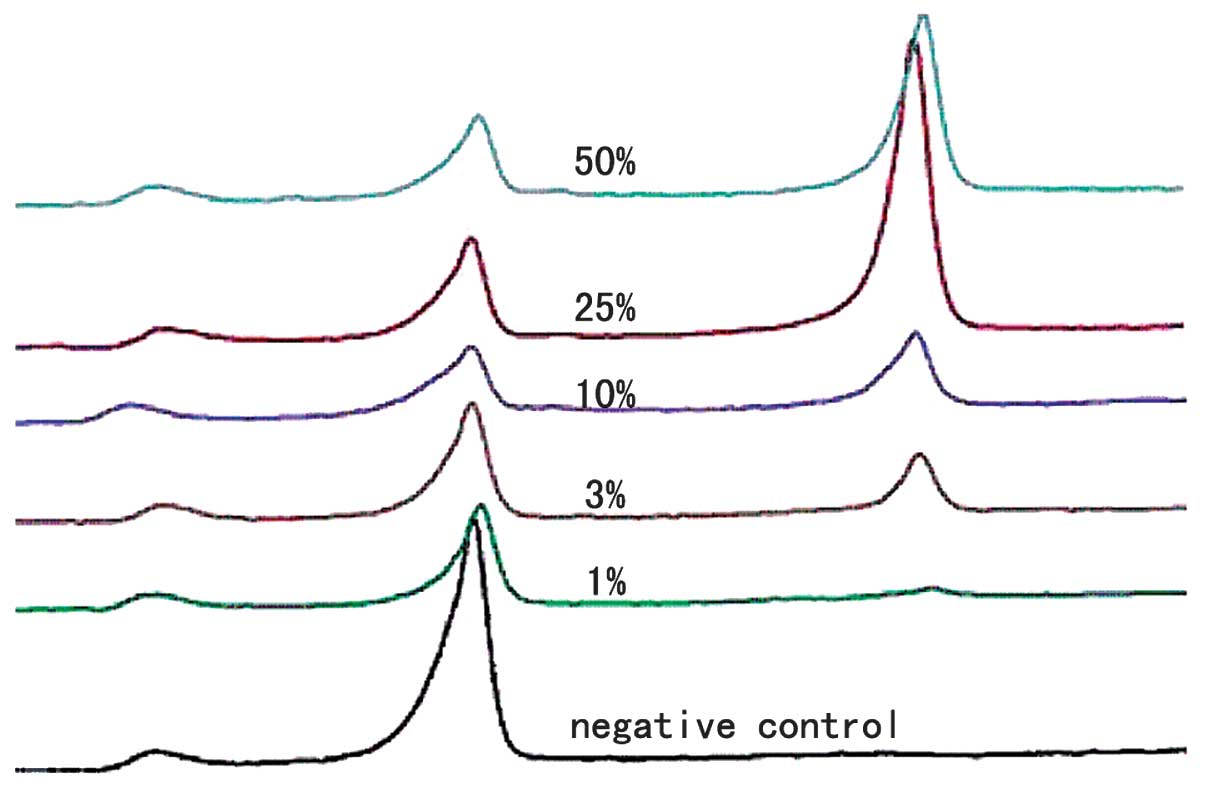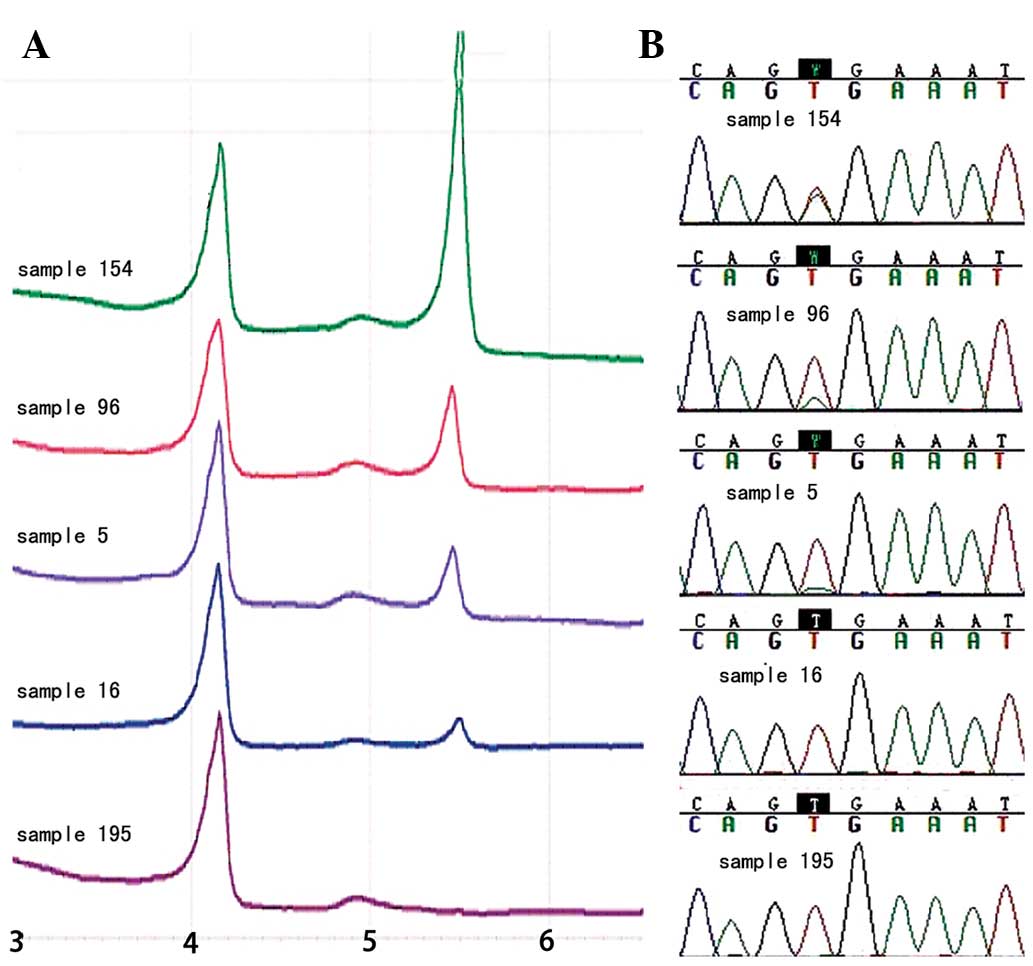|
1
|
Ries LAG, Melbert D, Krapcho M, et al:
SEER Cancer Statistics Review, 1975–2005. National Cancer
Institute; Bethesda, MD: 2007
|
|
2
|
Schlumberger M and Pacini F: Prognostic
factors. Thyroid Tumors. Nucleon Editions; Paris: pp. 111–125.
2003
|
|
3
|
Witt RL: Initial surgical management of
thyroid cancer. Surg Oncol Clin N Am. 17:71–91. 2008. View Article : Google Scholar : PubMed/NCBI
|
|
4
|
Kim TH, Park YJ, Lim JA, et al: The
association of the BRAF(V600E) mutation with prognostic factors and
poor clinical outcome in papillary thyroid cancer: a meta-analysis.
Cancer. 118:1764–1773. 2012. View Article : Google Scholar : PubMed/NCBI
|
|
5
|
Xing M, Clark D, Guan H, et al: BRAF
mutation testing of thyroid fine-needle aspiration biopsy specimens
for preoperative risk stratification in papillary thyroid cancer. J
Clin Oncol. 27:2977–2982. 2009. View Article : Google Scholar
|
|
6
|
Gong RX, Zhou Y, Luo SH, et al: An
investigation of BRAF mutation in papillary thyroid carcinoma and
its clinical value. Zhonghua Yi Xue Yi Chuan Xue Za Zhi.
26:310–313. 2009.(In Chinese).
|
|
7
|
Kebebew E, Weng J, Bauer J, et al: The
prevalence and prognostic value of BRAF mutation in thyroid cancer.
Ann Surg. 246:466–471. 2007. View Article : Google Scholar : PubMed/NCBI
|
|
8
|
Davies H, Bignell GR, Cox C, et al:
Mutations of the BRAF gene in human cancer. Nature. 417:949–954.
2002. View Article : Google Scholar : PubMed/NCBI
|
|
9
|
DeLuca AM, Srinivas A and Alani RM: BRAF
kinase in melanoma development and progression. Expert Rev Mol Med.
10:e62008. View Article : Google Scholar : PubMed/NCBI
|
|
10
|
Xing M: BRAF mutation in thyroid cancer.
Endocr Relat Cancer. 12:245–262. 2005. View Article : Google Scholar : PubMed/NCBI
|
|
11
|
Ball DW: Selectively targeting mutant BRAF
in thyroid cancer. J Clin Endocrinol Metab. 95:60–61. 2010.
View Article : Google Scholar : PubMed/NCBI
|
|
12
|
Costa AM, Herrero A, Fresno MF, et al:
BRAF mutation associated with other genetic events identifies a
subset of aggressive papillary thyroid carcinoma. Clin Endocrinol
(Oxf). 68:618–634. 2008. View Article : Google Scholar
|
|
13
|
Howell GM, Carty SE, Armstrong MJ, et al:
Both BRAF V600E mutation and older age (≥ 65 years) are associated
with recurrent papillary thyroid cancer. Ann Surg Oncol.
18:3566–3571. 2011.
|
|
14
|
Bollag G, Tsai J, Zhang J, et al:
Vemurafenib: the first drug approved for BRAF-mutant cancer. Nat
Rev Drug Discov. 11:873–886. 2012. View
Article : Google Scholar : PubMed/NCBI
|
|
15
|
Tufano RP, Teixeira GV, Bishop J, et al:
BRAF mutation in papillary thyroid cancer and its value in
tailoring initial treatment: a systematic review and meta-analysis.
Medicine (Baltimore). 91:274–286. 2012. View Article : Google Scholar
|
|
16
|
Henderson YC, Shellenberger TD, Williams
MD, et al: High rate of BRAF and RET/PTC dual mutations associated
with recurrent papillary thyroid carcinoma. Clin Cancer Res.
15:485–491. 2009. View Article : Google Scholar : PubMed/NCBI
|
|
17
|
Alzahrani AS and Xing M: Impact of lymph
node metastases identified on central neck dissection (CND) on the
recurrence of papillary thyroid cancer: potential role of BRAFV600E
mutation in defining CND. Endocr Relat Cancer. 29:13–22. 2013.
View Article : Google Scholar
|
|
18
|
Bozec A, Dassonville O, Chamorey E, et al:
Clinical impact of cervical lymph node involvement and central neck
dissection in patients with papillary thyroid carcinoma: a
retrospective analysis of 368 cases. Eur Arch Otorhinolaryngol.
268:1205–1212. 2011. View Article : Google Scholar
|
|
19
|
Elisei R, Viola D, Torregrossa L, et al:
The BRAF(V600E) mutation is an independent, poor prognostic factor
for the outcome of patients with low-risk intrathyroid papillary
thyroid carcinoma: single-institution results from a large cohort
study. J Clin Endocrinol Metab. 97:4390–4398. 2012. View Article : Google Scholar
|
|
20
|
O’Neill CJ, Bullock M, Chou A, et al:
BRAF(V600E) mutation is associated with an increased risk of nodal
recurrence requiring reoperative surgery in patients with papillary
thyroid cancer. Surgery. 148:1139–1145. 2010.
|











